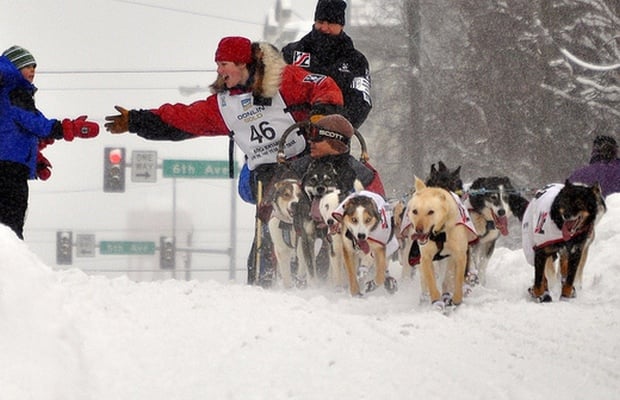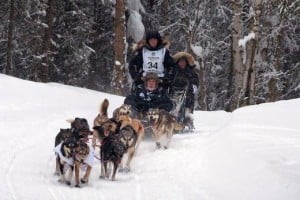
Dog sledding is a form of transportation that is over 100 years old. In that time not much has changed, but Allen Moore plans to do just that. The sled he’s using for this year’s Iditarod will have some major technological advancements.
One of the tricks to a successful dog sled race is to keep the weight of the sled down. If the dogs have less weight to pull they won’t get tired as quickly and they’ll be able to pull faster. Working dogs have it tough enough already, so it's up to the handlers to make their jobs as easy as possible.
This year, Moore has decided to use equipment bags made of parachute-like material paired with state-of-the-art resources to cut the weight of his sled by nearly 50 percent. A few decades ago dog sleds could weigh upwards of 70 pounds, but with recent advancements many weigh less than 40 pounds now. The sled that Moore will use to run this year’s race only weighs 29 pounds.
RELATED: 11 Best Dog Whisperer Tips From Cesar Millan
His wife, Aliy Zirkle, also runs the Iditarod every year, and she’s even finished in second place on three occasions. Together, the two have come up with a sled that resembles something out of a Transformer movie. The sled’s pieces can be removed and left behind as the teams get closer to the finish line.

The downside is that the less weight a sled has, the more difficult it is to control; especially at speeds reaching 15 miles per hour or more. For this reason, more experienced mushers usually use lightweight sleds and beginners start out with a sled that has a little more weight to it.
RELATED: How to Teach a Dog to Walk on a Leash
Recently, shaving weight off of dog sleds has been a great priority for the mushing community. Drivers are allowed to have three different sleds for the course of the race, and typically they use a lighter sled for last leg of the race where the terrain isn’t quite so rough.
In the past, lightweight sleds were much flimsier, but thanks to technological advancements and new materials, like composite metals, things have drastically changed in the last 20-30 years. Now lightweight sleds can be built tough and able to withstand the harsh terrain of the entire Iditarod race.
Since this year’s Iditarod has had some route changes due to lack of snow, many experts think that most mushers will choose to use just one lightweight sled for the entire journey. This will save them the hassle of changing from one sled to another in the middle of the race.
Moore and Zirkle aren’t the only mushers looking for ways to lighten the weight of their sleds. Sled makers and mushers alike are looking to new technologies, including aircraft manufacturing, to find the lightest materials possible that are able to hold up under the rough Iditarod conditions.












